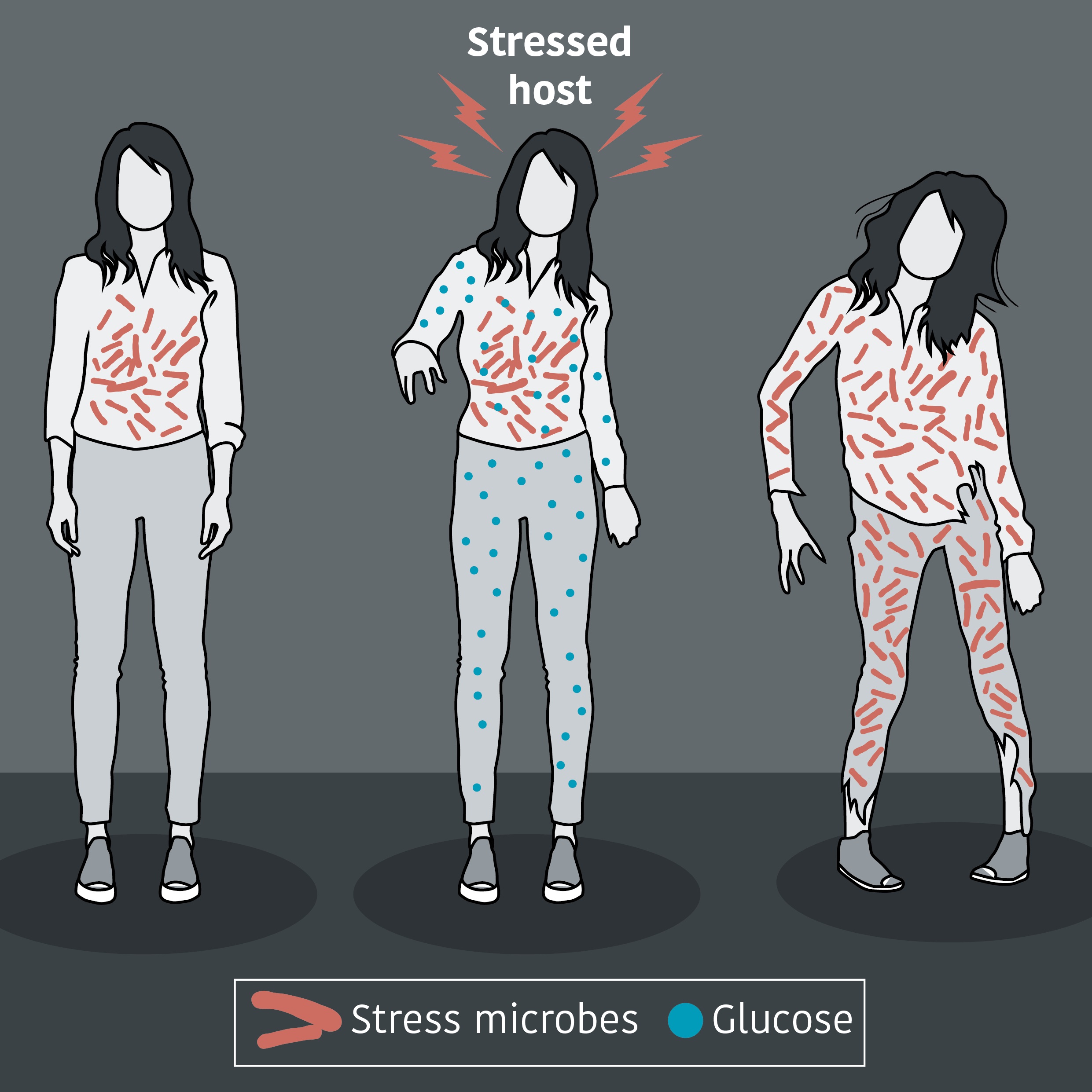More than half of the human body is not actually human: The body hosts approximately 100 trillion microbes. These bacteria, yeast and viruses, which make up the human microbiome, affect more than physical health. They also influence behavior and emotions.
Some microbes prosper when the body is under stress, while other microbes contribute to buffering the body against stress. Athena Aktipis, associate professor of psychology at Arizona State University, used evolutionary theory to examine the reciprocal relationship between microbes in the human body and stress. The paper was published in BioEssays on December 7.
“Microbes have access to physiological systems that can give them the power to stress us out, and there is evidence that contributing to the human body’s stress response serves their evolutionary goals,” Aktipis said. “This means that microbes can potentially change our physiology to keep the stress response going, ensuring their access to resources so they can proliferate. One example of a microbe that can benefit from host stress is the bacterium E. coli. We call microbes like these ‘stress microbes,’ and the microbes that can provide resilience against stress, like some species of Lactobacillus, ‘resilience microbes’ because there is evidence that they affect our physiology in these ways, possibly for their own evolutionary benefit.”
Tug-of-war
Stress-loving microbes both contribute to and benefit from the physiological changes that happen in the human body in response to stress, such as high blood glucose levels, increased permeability of the intestines and suppressed immune system responses. These microbes use what evolutionary biologists call a fast life history strategy. Organisms with fast life histories benefit from big bursts of resources, like the increase in blood sugar that happens when people experience stress, and also replicate quickly and – in the case of microbes – without regard for their host. But the body only benefits from the stress response in specific situations, like escaping danger. In other situations, the body does not benefit from the stress response, setting up a figurative tug-of-war between host and microbe.
“All organisms have their own evolutionary interests, and different resources and environments lead to optimal survival and reproduction. What is best for the host is not always what is best for the microbe, and we think this is what might be going on with some pathogenic ‘stress microbes.’ Sometimes the host response can lead to escalation of the conflict, which can lead to chronic inflammation as the host’s immune system tries in vain to deal with microbes that are causing a problem in the body. Stress can encourage this kind of dysregulated environment in the host that allows some microbes to thrive,” Aktipis said.
Not all microbes in the microbiome benefit from a stressed host. Many do better in a stable environment, relying on a slow life history strategy that prioritizes surviving over reproducing. Microbes like these both alter and benefit from physiological processes that help protect the host from stress. Some, like Lactobacillus reuteri, contribute to increased production of the hormone oxytocin, which is associated with feeling calm and connected with others.
“Microbes alter host behavior – whether it be by promoting stress or contributing to resilience against it – in ways that increase the odds they will be able to reproduce,” Aktipis said. “The composition of our microbiomes influences us in myriad ways: It can change the way we feel in terms of stress and our mental health and influence how we respond to the world around us. But it is a two way street; the way we behave – including what we eat, whether we exercise, and how we manage our stress – also affects the composition of our microbiomes. By changing our behavior, we can affect which microbes are thriving inside us.”
Diego Beltran, a psychology graduate student, also contributed to the paper.
